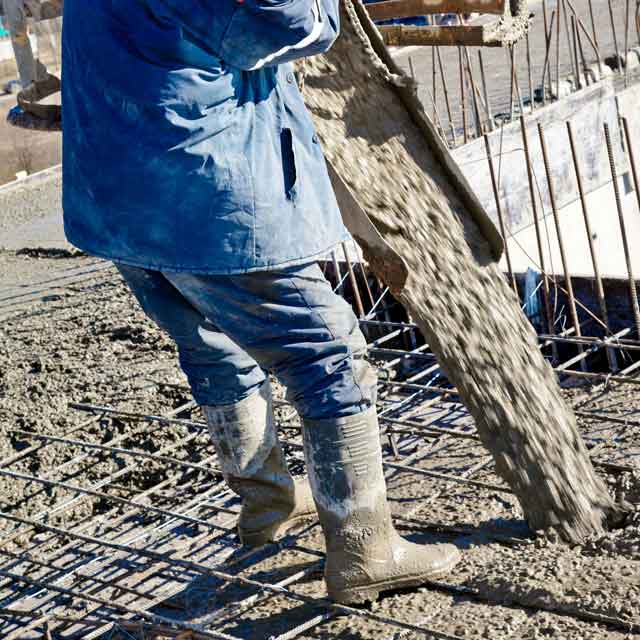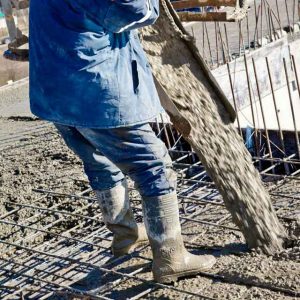
Review of Validation of NDT Equipment for Concrete
Review for GPR on the Validation of NDT Equipment for Concrete
This document concluded
Ground Penetrating Radar (GPR) : The application of GPR will add another capable method to the assortment of NDT techniques, and should prove useful in locating reinforcement steel and tendon ducts, and in determining concrete thickness. Since GPR measurements can be conducted with a high scan speed, it can also be used to define the measurement areas on which other NDT methods can be applied for a more in-depth investigation. For example, tendon ducts can be first located by GPR, so that measurements with ultrasonic-echo to examine the grout inside the duct will only have to be conducted along the duct and not along the whole measurement area, thus reducing the time for the inspection.
Select text is provided below from
Validation of Nondestructive Testing Equipment for Concrete
Author(s) : Daniel Algernon, Dennis R. Hiltunen, and Christopher C. Ferraro
Department of Civil and Coastal Engineering University of Florida 365 Weil Hall, P.O. Box 116580
Gainesville, FL 32611-6580
Key Words are Automated scanning, concrete cover, concrete thickness, covermeter, impact echo, nondestructive evaluation, nondestructive test, tendon ducts, ultrasonic echo
From the end of the document
Closure
7.1 Summary of Findings
The Florida Department of Transportation (FDOT) would like to implement nondestructive test and evaluation (NDT/NDE) technologies to assess quality of concrete constructed in the field for new construction, and to assess the structural details of older and often unknown existing structures. Toward this aim, the primary objective of the project was to design, construct, and implement a facility for calibrating and validating methodologies for the NDT/NDE of structural concrete materials and members.
Four concrete test blocks have been designed and built in which specific testing problems were implemented to investigate them under defined conditions in the laboratory. Four major testing problems/aspects of NDT were included, namely: 1) locating reinforcing steel in concrete components, 2) measuring thicknesses and locating irregularities, 3) tendon duct inspection, and 4) application of NDT to determine elastic parameters. The specimens were designed to challenge NDT techniques, and serve to demonstrate their capabilities as well as their limitations.
An automated test frame has been designed, built, and implemented, and a user-friendly software platform for scanner control, data acquisition with different sensors, real-time imaging and data analysis has been developed and successfully applied in the project. Automated measurements were taken in s canning mode with impact-echo, ultrasonic echo, and covermeter on the four concrete test specimens. GPR equipment has been procured but will require extra effort to be operated on the scanner. Based upon the experimental results presented herein, the key findings are summarized as follows:
x Covermeter measurements on the specimen with reinforcement steel clearly demonstrated the potential of this method, but also showed some limitations.
x Complementary ultrasonic-echo measurements in combination with the synthetic aperture focusing technique (SAFT) analysis showed the potential of this method to resolve reinforcement in cases where it cannot be resolved by the covermeter.
x Measurements conducted on the specimen with varying thicknesses demonstrated the capabilities of especially ultrasonic-echo.
x The tendon ducts in the tendon duct specimen were located in 2D by impact-echo and in 3D by ultrasonic echo. Even the covermeter measurements carried out on that block showed a clear image of the ducts. A differentiation between the empty, grouted and half-grouted areas was questionable at best, but mostly impossible. A reason for that is assumed to be the lack of bond between the grout and the duct, maybe caused in the process of having to move the block in the laboratory.
x Two additional tendon duct specimens were provided by the FDOT Structures Office in Tallahassee. Manual impact-echo measurements were taken on block 3-1, which has tendon ducts with various kinds of voids in the grout. The results were consistent with the theory that an empty duct causes a higher apparent shift in the backwall than a filled duct, although the ducts could not be individually identified.
x The theory for determining elastic parameters of concrete has been presented and demonstrated in an example. Based on the example, it is understood that this method can provide a good estimate of these important mechanical properties.
x Modification or adaption of the GPR device will be necessary to operate it in combination with the scanner system.
7.2 Conclusions
Based upon the findings of this study, the primary conclusions are as follows:
x Overall, a first-stage NDT validation facility has been established, and the system has been demonstrated to work precisely and reliably.
x The system implements automated scanning measurements and data analysis techniques with NDT hardware to produce an advanced sensing system for assessment of structural concrete materials and members.
x The concept for the system design follows the scanning systems pioneered at BAM, Berlin, Germany, but it provides a unique, one-of-a-kind capability in the United States.
7.3 Recommendations
Based upon the findings and conclusions documented herein, the following recommendations for further investigation are presented:
x Quality Assurance/Quality Control (QA/QC) : It is hoped that the positive results documented herein on the application of automated NDT to assess structural concrete will inspire continued and increased application in real infrastructure projects and problems. For example, automated NDT should one day be able to serve as the primary source for inspection and acceptance of infrastructure facilities. However, to realize this vision, the work documented herein will not be sufficient, but can serve as a first step in this direction. Certainly more extensive experimental testing must be conducted to establish the detailed capabilities of the techniques, and to establish a sufficient statistical database from which appropriate acceptance criteria can be developed.
x Field Testing: Since the scanners can be easily taken off the frame to move them on a truck, the system is well suited to be applied in the field. As long as the surfaces of the components to be tested provide at least a minimum smoothness that is needed for the coupling of the sensors, to mount the scanner and to position the sensors, impact-echo, ultrasonic-echo and covermeter measurements can be conducted just as it was demonstrated in the laboratory. It is recommended that pilot field studies be conducted to shake-down use of the system for field applications.
x Tendon Ducts : The tendon duct experiments documented herein were only partially successful. However, there are enough clear indications from the tests on the two blocks to suggest that more complete success can be expected from proper application of NDT, and further trials should be conducted to investigate and develop techniques for this important area of structural concrete assessment, including the suggestions discussed in Chapter 5.7.3.
x Ground Penetrating Radar (GPR) : The application of GPR will add another capable method to the assortment of NDT techniques, and should prove useful in locating reinforcement steel and tendon ducts, and in determining concrete thickness. Since GPR measurements can be conducted with a high scan speed, it can also be used to define the measurement areas on which other NDT methods can be applied for a more in-depth investigation. For example, tendon ducts can be first located by GPR, so that measurements with ultrasonic-echo to examine the grout inside the duct will only have to be conducted along the duct and not along the whole measurement area, thus reducing the time for the inspection.
x Profilometer: The laser profilometer will provide valuable information especially for field applications since it will be able to register surface cracks and will be able to measure the surface texture and profile along the measurement area, which can be used in the interpretation of the NDT results. The surface profile can as well be used during the measurement to prevent the sensor from getting damaged at potential obstacles on the surface. It is recommended that this system be implemented in the scanner for future measurement applications.
x Data Fusion : As provided via example in the GPR section above, the more general subject of data fusion and integration should be more fully investigated and developed. As with the GPR example, testing efficiencies are expected with the coupling of multiple methods, each working on an aspect of the overall problem for which the particular method is best suited. Also, combinations of differing techniques may reveal details of the problem not available from the results of a single technique applied alone.
